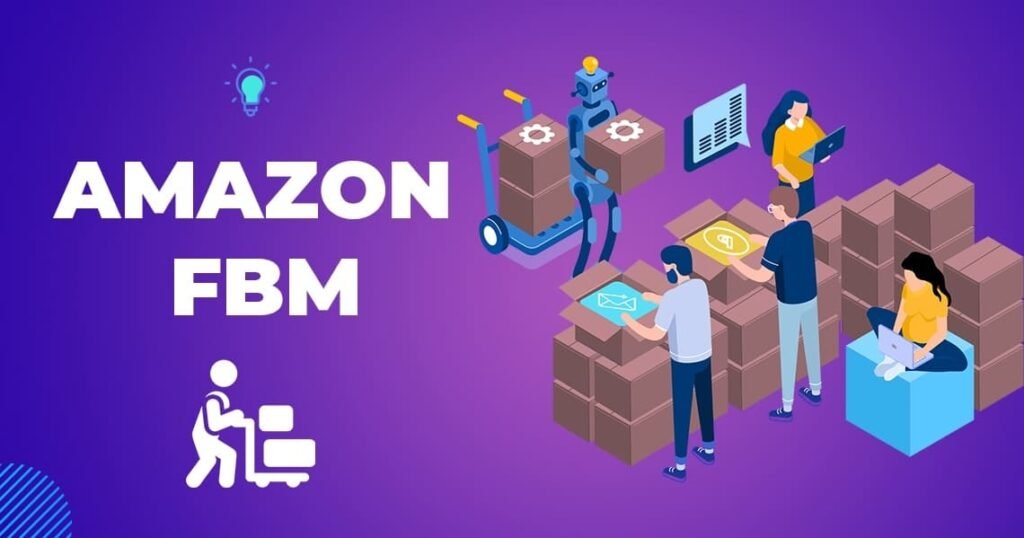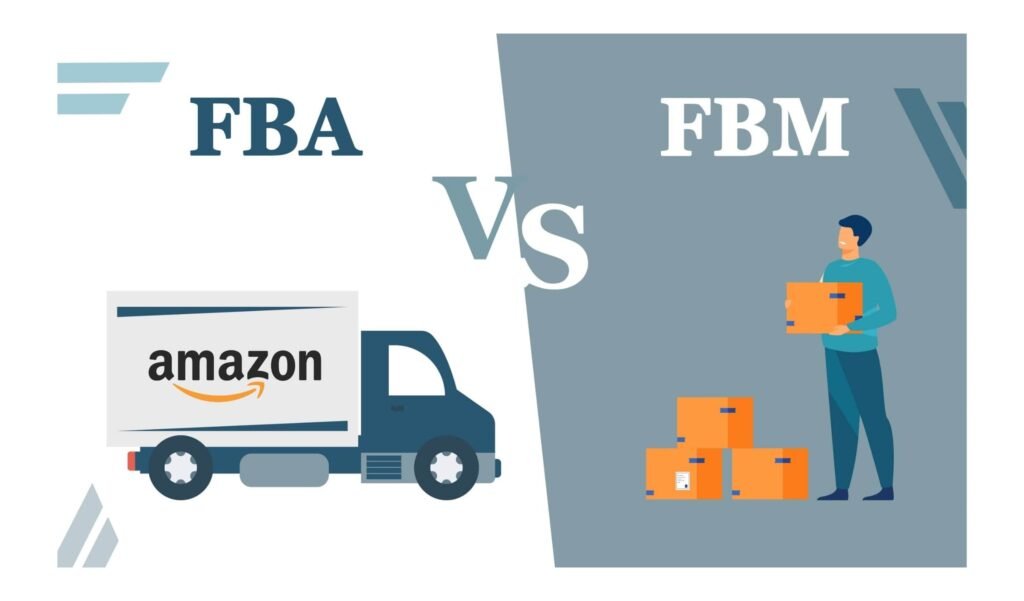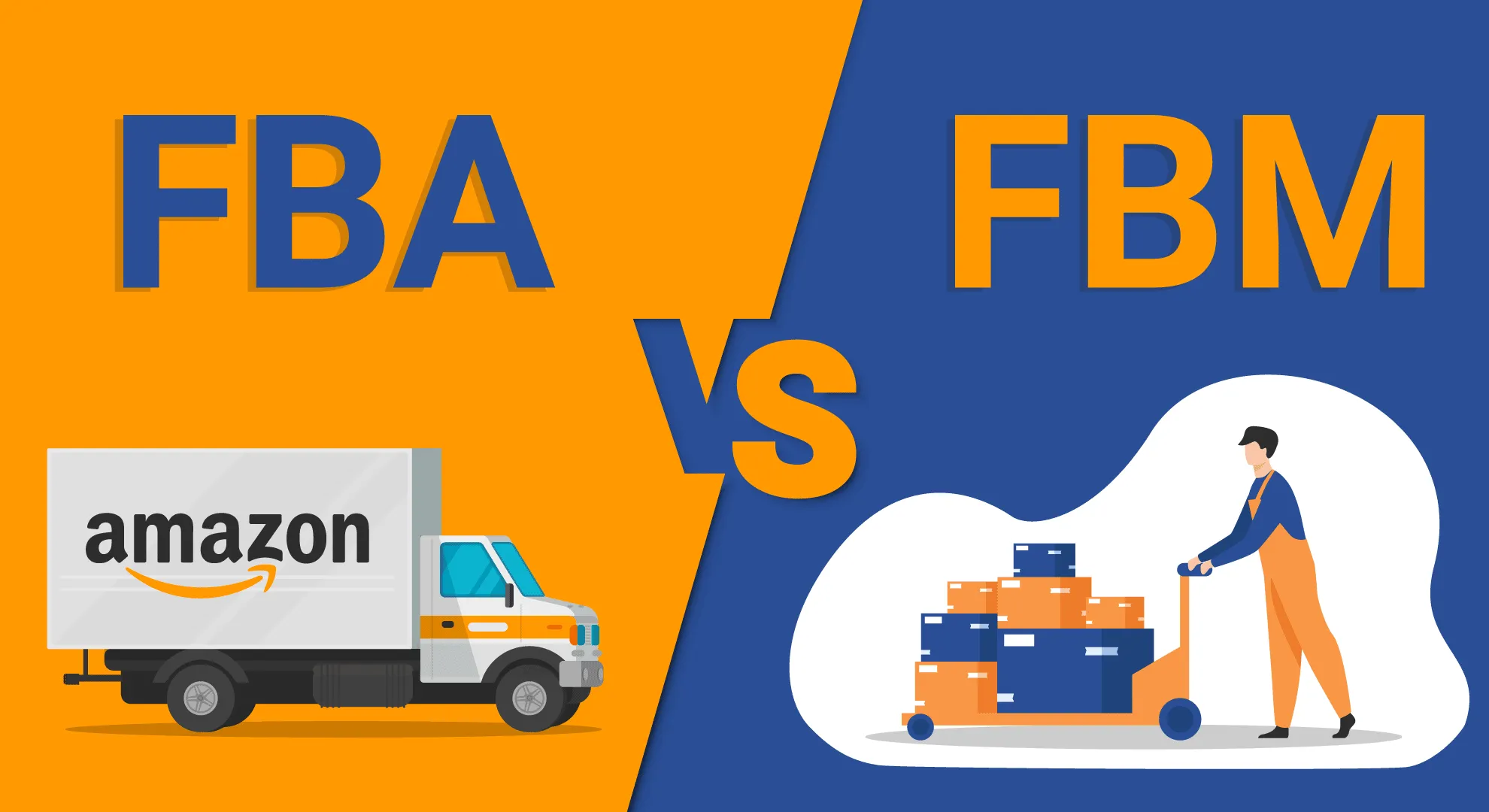Table of Contents
In the realm of e-commerce, two prominent fulfillment methods offered by Amazon reign supreme: FBM (Fulfillment by Merchant) and FBA (Fulfillment by Amazon). These two approaches present distinct advantages and considerations for sellers navigating the complexities of online retail. Understanding the differences between Amazon FBM and FBA is paramount for sellers aiming to optimize their operations, enhance customer satisfaction, and maximize their profitability. Let’s delve into the comparison between Amazon FBM and FBA to decipher which fulfillment method is the best fit for your business needs.
Understanding Amazon FBM

Understanding Amazon FBM (Fulfillment by Merchant) involves sellers managing their own fulfillment processes. This includes tasks like storing inventory, packaging orders, and shipping directly to customers. With FBM, sellers maintain control over the entire fulfillment process, allowing for greater flexibility and customization in handling orders and customer interactions.
This method requires sellers to handle logistics, storage space, and shipping logistics independently, which can be advantageous for those with specific branding requirements or unique product offerings. However, it also means that sellers are responsible for ensuring timely delivery, managing inventory levels, and addressing any customer inquiries or issues that may arise during the shipping process. Overall, Amazon FBM offers sellers a more hands-on approach to fulfillment, allowing them to tailor their processes to best suit their business needs and customer preferences.
Pros of Amazon FBM:
- Greater control over shipping and handling
- Direct interaction with customers
- Lower fulfillment fees compared to FBA
Cons of Amazon FBM:
- Requires storage space for inventory
- More time-consuming for order processing and shipping
- Limited access to Amazon Prime benefits
Understanding Amazon FBA
Amazon FBA, or Fulfillment by Amazon, is a comprehensive fulfillment service provided by Amazon to sellers. With FBA, sellers send their products to Amazon’s fulfillment centers, where they are stored, packed, and shipped to customers on behalf of the seller. Additionally, Amazon handles customer service inquiries, returns, and refunds related to FBA orders.
This service offers several benefits to sellers, including access to Amazon Prime’s fast shipping options, increased visibility through the “Fulfilled by Amazon” badge, and the ability to reach a broader customer base. By leveraging Amazon’s extensive infrastructure and logistics network, sellers can focus on growing their business while Amazon takes care of the fulfillment and customer service aspects.
Overall, Amazon FBA streamlines the fulfillment process for sellers, allowing them to scale their operations and provide a seamless shopping experience for customers.
Pros of Amazon FBA:
- Hands-off approach to fulfillment
- Access to Amazon Prime benefits, including free shipping for Prime members
- Increased visibility and trust with customers
Cons of Amazon FBA:
- Higher fulfillment fees compared to FBM
- Potential for inventory storage fees
- Less control over the fulfillment process
Key Differences Between FBM and FBA

Key Differences Between FBM and FBA
The primary difference between FBM and FBA lies in who is responsible for fulfillment and shipping. With FBM, sellers handle these tasks themselves, while with FBA, Amazon takes care of them. Additionally, FBA offers the advantage of Prime eligibility and the potential for increased sales due to faster shipping and higher visibility on the platform.
- Fulfillment Responsibility:
- FBM: Sellers are responsible for storing, packing, and shipping orders directly to customers.
- FBA: Amazon handles the storage, packing, and shipping of orders on behalf of sellers.
- Inventory Management:
- FBM: Sellers manage their inventory levels and storage space.
- FBA: Amazon manages inventory levels in its fulfillment centers, providing automated restocking.
- Shipping and Handling:
- FBM: Sellers have control over shipping methods, costs, and packaging.
- FBA: Amazon offers Prime shipping benefits and handles all shipping and packaging logistics.
- Customer Service:
- FBM: Sellers are responsible for handling customer inquiries, returns, and refunds.
- FBA: Amazon manages customer service inquiries, returns, and refunds for FBA orders.
- Prime Eligibility:
- FBM: Sellers may not be eligible for Amazon Prime benefits, depending on their shipping methods.
- FBA: FBA orders are eligible for Prime shipping benefits, increasing visibility and trust among customers.
- Cost Structure:
- FBM: Sellers incur costs related to storage, packaging, and shipping.
- FBA: Sellers pay fulfillment fees to Amazon, which vary based on factors such as product size and weight.
Understanding these key differences is essential for sellers to choose the most suitable fulfillment method for their business needs and goals.
When to Choose Amazon FBM
Amazon FBM is ideal for sellers who:
- Have ample storage space for inventory
- Want more control over the fulfillment process
- Are selling low-volume or unique products
- Are cost-conscious and want to minimize fulfillment fees
When to Choose Amazon FBA
Amazon FBA is suitable for sellers who:
- Want a hands-off approach to fulfillment
- Have limited storage space or sell high-volume products
- Desire access to Amazon Prime benefits and increased visibility
- Value scalability and want to focus on growing their business
Cost Comparison
When comparing the costs of FBM and FBA, it’s essential to consider factors such as storage fees, fulfillment fees, and shipping costs. While FBA may have higher fulfillment fees upfront, it can offer cost savings in the long run, especially for sellers with high-volume sales.
Case Studies: Real-Life Examples
When deciding between Amazon FBM (Fulfillment by Merchant) and FBA (Fulfillment by Amazon), understanding the cost implications is crucial for sellers. Here’s a breakdown of the costs associated with each fulfillment method:
- Fulfillment Fees:
- FBM: Sellers are responsible for all fulfillment-related costs, including packaging materials, shipping fees, and labor.
- FBA: Sellers pay fulfillment fees to Amazon, which cover storage, packing, and shipping of orders. These fees vary based on factors such as product size, weight, and storage duration.
- Storage Fees:
- FBM: Sellers bear the cost of storing inventory in their own facilities or third-party warehouses.
- FBA: Amazon charges storage fees for inventory stored in its fulfillment centers. These fees are calculated based on the volume of storage space used and the duration of storage.
- Shipping Costs:
- FBM: Sellers negotiate shipping rates with carriers and are responsible for covering the cost of shipping orders to customers.
- FBA: Amazon offers discounted shipping rates for FBA orders, leveraging its bulk shipping capabilities. Sellers pay for shipping to Amazon’s fulfillment centers, while Amazon covers the cost of shipping orders to customers.
- Additional Fees:
- FBM: Sellers may incur additional fees related to returns processing, customer service, and order management.
- FBA: In addition to fulfillment fees, sellers may face fees for services such as labeling, removal, and disposal of inventory.
Overall, while FBA may involve higher fulfillment fees upfront, it offers the convenience of a comprehensive fulfillment service and access to Prime shipping benefits. Sellers must carefully consider their sales volume, product characteristics, and budget constraints when evaluating the cost-effectiveness of each fulfillment method.
Tips for Making the Decision
When deciding between FBM and FBA, consider factors such as your storage capabilities, budget, and long-term goals. It’s also essential to analyze your product’s demand, shipping requirements, and target audience to determine which method aligns best with your business strategy.
Also Read :- How to Get Ungated on Amazon: The Full Requirements & Steps
Conclusion
In conclusion, both Amazon FBM and FBA offer distinct advantages and disadvantages for sellers. Whether you choose to handle fulfillment yourself with FBM or leverage Amazon’s resources with FBA, the key is to select the method that best aligns with your business needs and goals. By understanding the differences between the two options and carefully evaluating your circumstances, you can make an informed decision that sets you up for success on the Amazon marketplace.
FAQs
Can I switch between FBM and FBA?
Yes, you can switch between FBM and FBA at any time. However, keep in mind that it may take some time to transition your inventory and adjust to the new fulfillment method.
Are there any restrictions on the types of products I can sell with FBA?
Amazon has specific guidelines for products eligible for FBA, including restrictions on hazardous materials, prohibited items, and certain categories requiring approval.
How do I calculate the costs of FBM and FBA for my business?
You can use Amazon’s FBA revenue calculator and FBM fee calculator to estimate the costs associated with each fulfillment method based on your product type, size, and sales volume.
Do I need to be enrolled in Amazon Prime to use FBA?
No, sellers do not need to be Amazon Prime members to use FBA. However, Prime eligibility for your products can help increase sales and visibility on the platform.
Can I use both FBM and FBA for my products?
Yes, some sellers choose to use a combination of FBM and FBA to optimize their fulfillment strategy based on factors such as product demand, storage capacity, and customer preferences.



Leave a Reply